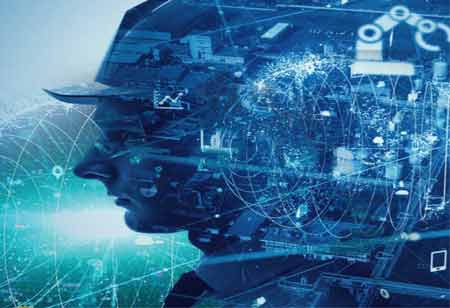Thank you for Subscribing to Agri Business Review Weekly Brief
The Future of Agriculture in the Era of Smart Technologies
In the era of smart technologies, agriculture is poised for transformation, promising increased efficiency

By
Agri Business Review | Friday, July 19, 2024
Stay ahead of the industry with exclusive feature stories on the top companies, expert insights and the latest news delivered straight to your inbox. Subscribe today.
In the era of smart technologies, agriculture is poised for transformation, promising increased efficiency, productivity, and resilience to environmental and economic uncertainties.
FREMONT, CA: The role of smart technologies emerges as a transformative force reshaping farming practices. These smart technologies, empowered by advances in artificial intelligence and the Internet of Things, offer unprecedented precision, efficiency, and sustainability in agricultural processes. Their impact resonates across the entire agricultural ecosystem, from optimizing crop yields and resource usage to streamlining supply chains and enhancing food safety.
Precision Agriculture: By applying data-driven understandings, precision farming is an advanced technique that improves soil quality, production, and resource efficiency. This approach maximizes agricultural resources while enhancing crop health by utilizing robotics, automation, drones, and remote sensing technology.
Smart Farming: Smart farming is gaining popularity through technology like computer vision, AI, and the IoT. Farmers can benefit from this trend by making data-driven decisions and increasing crop quality and quantity overall, with a focus on sustainability, digitization, and automation.
Vertical Indoor Farming: Indoor vertical farming transforms agriculture by controlling temperature, light, and water levels. This technology benefits farmers by saving 70 percent of water and labor because planting and harvesting are done by robots, resulting in better crop cultivation.
Technology Used in Livestock Farming: Farmers can now increase output, streamline operations, and provide better animal care using data-driven information in livestock farming. With advancements like automated dairy installations and milk sensors, animal agricultural practices are developing.
Robotics and Automation: Due to technological advancements that streamline farming procedures, such as autonomous tractors, robotic harvesters, drones, and seeding robots, agriculture is becoming an increasingly automated industry. These advancements aim to boost total farm output, reduce labor costs, and boost productivity.
Artificial Intelligence (AI): AI combines machine learning and computer vision technologies and is essential to contemporary agriculture. It assists in converting analog data into information that is digitally organized and ready for an in-depth examination. AI helps farmers make better decisions for their agricultural operations by utilizing real-time data.
Cloud Computing Model: Recently, cloud computing has been the main component of smart agriculture, enabling remote data gathering, storage, and land management. This paradigm integrates robots, automation, and drone technology to optimize farming operations.
Smart technologies hold the key to addressing the challenges of feeding a growing global population while safeguarding the planet's finite resources by optimizing resource utilization, mitigating environmental impact, and enhancing productivity. However, their successful implementation requires concerted efforts from all representatives, including farmers, policymakers, researchers, and technology developers, to ensure equitable access, responsible deployment, and continuous innovation.





